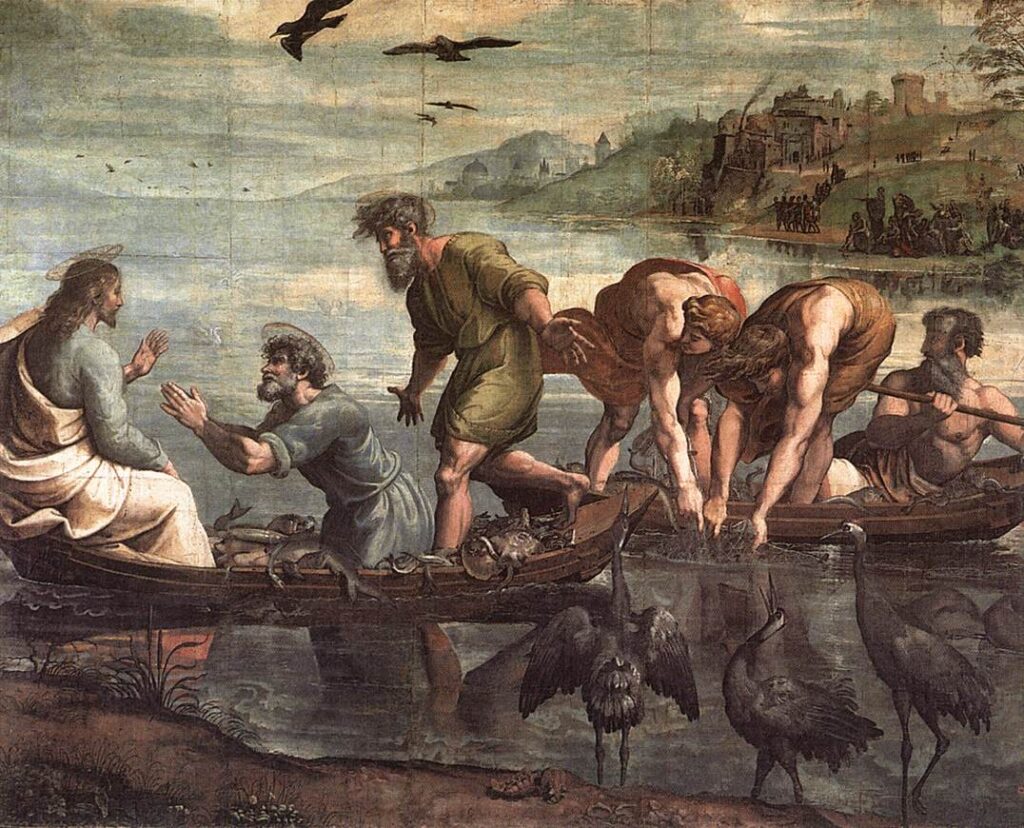The Resurrection of the Body

Easter Wednesday is the Wednesday immediately following the great feast of the Resurrection. This week is just the beginning of our celebration. Following forty days of Lenten preparation, Easter abounds in a full fifty days of time lived out with Jesus in the time between his resurrection and his ascension to the right hand of the Father and giving of the Holy Spirit.
This first Wednesday after Easter, in particular, is centered on the greater themes of Easter: after his resurrection Jesus is now revealed as the true Lord who rules over all. The lessons pick up in the book of Acts, when Peter explains the power by which he works wonders, including healing the lame. He confesses that it is by the glorified Jesus and by his name that we are healed.
This theme continues in the Gospel for the day, where Jesus appears to his disciples displaying his glory in great catches of fish. One thing that stands out in the text is how the great catch of fish prefigures how the apostles will now live, reeling in great catches of believers. Another noteworthy part is that, although John doesn’t state it outright, Jesus partakes in eating the fish. We pick up on this detail in Luke’s account, providing us some context that after rising from the dead, the Lord eats, proving to his disciples as well as the Bible’s readers that he was there in bodily form. In doing so, Jesus assured his disciples that he was not a ghost and that the resurrection was a full, bodily reality. By eating with his disciples he displayed the reality that we ourselves will one day enjoy—a perfection and glorification of the soul and body together.
All in all, the victory of Jesus’ resurrection resounds throughout this first week of Easter. Easter Wednesday is just the beginning of that joy, leading believers from Easter Sunday into the full fifty days of the season as we hear that Jesus reveals himself and sends the apostles out into the world as his hands and feet to make disciples of all nations.
Brief History
The week after Easter Sunday was historically a time for continued instruction in all that Easter means. All who enrolled as candidates for baptism and who were baptized at the Easter Vigil now got to don their white baptismal garments, a reason why this week is called “Bright Week” or “White Week.” Every day, there were between one and three masses offered, and in the evenings, the newly baptized received instruction in the way of the sacramental mysteries of which they were new partakers.
Today, the week after Easter continues to be an important week in the Lutheran Church where the Easter celebration continues on not merely for a single day but for the whole Easter season. Some churches choose to offer daily services, and many families spread out the Easter fun. Whether you enjoy dyeing eggs, eating lamb, or enjoying nature with spring’s many signs of resurrection, it simply can’t all be consumed, enjoyed, and done in a single day!

Lessons
Resources
Propers found in Daily Divine Service Book: A Lutheran Daily Missal, edited by the Rev. Heath Curtis
References:
1. Weiser, Francis X. Handbook of Christian Feasts and Customs: The Year of the Lord in Liturgy and Folklore. Harcourt, Brace & World, Inc. 1952.
Images:
1. Miraculous Catch of Fish, Gustave Doré, French, 1832-1883.
2. The Miraculous Draught of Fishes, Raphael, Italy, 1515.
Some links might be affiliate links which means we may receive a small commission at no extra cost to you. As an Amazon Associate we earn from qualifying purchases.



Wonderful acknowledgment of Easter season as we await to celebrate our risen Christ.